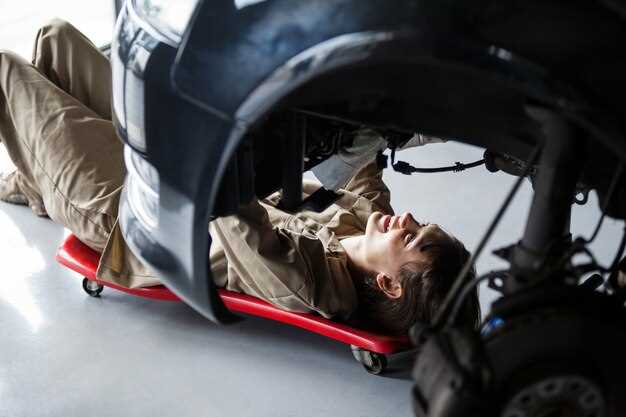
The suspension system of a vehicle plays a crucial role in ensuring a comfortable and safe ride. It is responsible for absorbing shocks from the road, maintaining tire contact, and providing stability during turns and braking. However, like any mechanical system, the suspension can encounter issues over time, leading to a compromised driving experience and potential safety hazards.
Recognizing the symptoms of suspension problems early can save both time and money in repairs. Common signs include excessive bouncing after hitting bumps, uneven tire wear, and a noticeable decrease in ride comfort. These indicators suggest that components such as shock absorbers, struts, or control arms may be failing and need immediate attention.
This article will guide you through the process of identifying suspension problems, understanding their impact on your vehicle’s performance, and exploring effective solutions. Whether you’re a car enthusiast or a casual driver, knowing how to address these issues can enhance the longevity of your vehicle and ensure a smoother, safer ride.
Common Symptoms of Suspension Issues and Their Impact on Ride Comfort
Suspension issues in vehicles can lead to a variety of symptoms that significantly affect ride comfort. Recognizing these signs early can help prevent further damage and ensure a smoother driving experience.
One of the most common symptoms is excessive vibration or bouncing during driving. If the vehicle feels overly bouncy over bumps or dips, it indicates that the shock absorbers may not be functioning optimally. This bouncing can cause discomfort and fatigue for passengers over longer journeys.
Another symptom to watch for is a feeling of instability, particularly when steering or cornering. If the vehicle seems to drift or sway, it is likely due to worn-out suspension components such as control arms or bushings. This not only impacts ride comfort but also poses a safety risk, as it can lead to loss of control.
Uneven tire wear is also a critical indicator of suspension problems. When suspension parts are not properly aligned or have excessive play, it can lead to uneven contact between the tires and the road. This not only affects handling but may also result in a rough ride, reducing overall comfort.
Noises, such as clunking or rattling sounds when driving over bumps, are another sign of potential suspension issues. These sounds often indicate that components like struts or mounts are either loose or worn out. Ignoring such noises can worsen the problem and further diminish ride quality.
Lastly, the vehicle may appear to lean to one side, especially when turning. This could indicate issues with the springs or shock absorbers, resulting in an imbalanced ride. Such lean can lead to an uncomfortable and unsafe driving experience.
Overall, recognizing these common symptoms of suspension issues is essential for maintaining ride comfort. Addressing these problems promptly not only improves the driving experience but also enhances the vehicle’s safety and longevity.
Step-by-Step Diagnosis of Suspension Components for Accurate Repairs

Diagnosing suspension problems is essential for maintaining vehicle comfort and ensuring a smooth ride. This process starts with a visual inspection of the suspension components. Look for signs of wear such as cracks, leaks, or bent parts. Pay close attention to bushings, struts, shocks, and control arms, as these parts are critical for proper operation.
Next, conduct a bounce test. Push down on each corner of the vehicle and release. Observe how many times the car bounces before settling. Excessive bouncing indicates worn shocks or struts, which directly affects ride comfort.
Moving on, check for unusual tire wear patterns. Uneven wear may point to alignment issues caused by faulty suspension components. Measure the tire pressure to ensure it is at the correct level, as low pressure can exacerbate handling problems.
Furthermore, listen for any strange noises while driving. Clunks, rattles, or grinding sounds can indicate that components like sway bar links or strut mounts may need attention. Performing a road test helps to assess performance in various conditions, highlighting potential suspension issues.
After gathering all observations, use a diagnostic tool to check for error codes related to the suspension system if applicable. This can provide insights into electronic suspension components that may not be easily detectable by visual inspection alone.
Finally, compile the data collected and compare it to manufacturer specifications. Consider the symptoms and inspection findings to determine the necessary repairs or parts replacements. By following this step-by-step diagnosis, you ensure not only the accuracy of repairs but also restore the vehicle’s ride quality and overall driving experience.
Tips for Maintaining Suspension Systems to Enhance Vehicle Performance

Maintaining your vehicle’s suspension system is crucial for ensuring a smooth ride and optimal comfort. Regular upkeep not only improves performance but also extends the lifespan of various components. Here are some essential tips to keep in mind:
1. Regular Inspections: Conduct routine checks of the suspension system to identify any signs of wear or damage. Look for leaks in shock absorbers, cracked bushings, or sagging springs. Early detection can prevent more severe issues down the road.
2. Check Alignment: Misalignment can lead to uneven tire wear and affect the overall handling of the vehicle. Have your alignment checked at least once a year or whenever you notice your vehicle pulling to one side.
3. Monitor Tire Health: Tires play a significant role in suspension performance. Ensure that they are properly inflated and exhibit even tread wear. Regularly rotating your tires helps maintain traction and enhances ride quality.
4. Replace Worn Components: Pay attention to signs of wear, such as excessive bouncing or swaying. Damaged shocks or struts should be replaced promptly to maintain comfort and control while driving.
5. Keep the System Clean: Dirt and debris can accumulate in suspension components, causing wear. Regularly clean the undercarriage and suspension parts to prevent corrosion and ensure smooth operation.
6. Invest in Quality Parts: If replacements are necessary, opt for high-quality components that meet or exceed OEM specifications. Investing in superior parts can significantly enhance both ride and comfort.
7. Consult Professionals: When in doubt, consult with automotive professionals who can provide expert guidance and maintenance services tailored to your vehicle’s specific requirements.
By following these tips, you can maintain your suspension system effectively, enhancing vehicle performance and ensuring a more comfortable ride.




